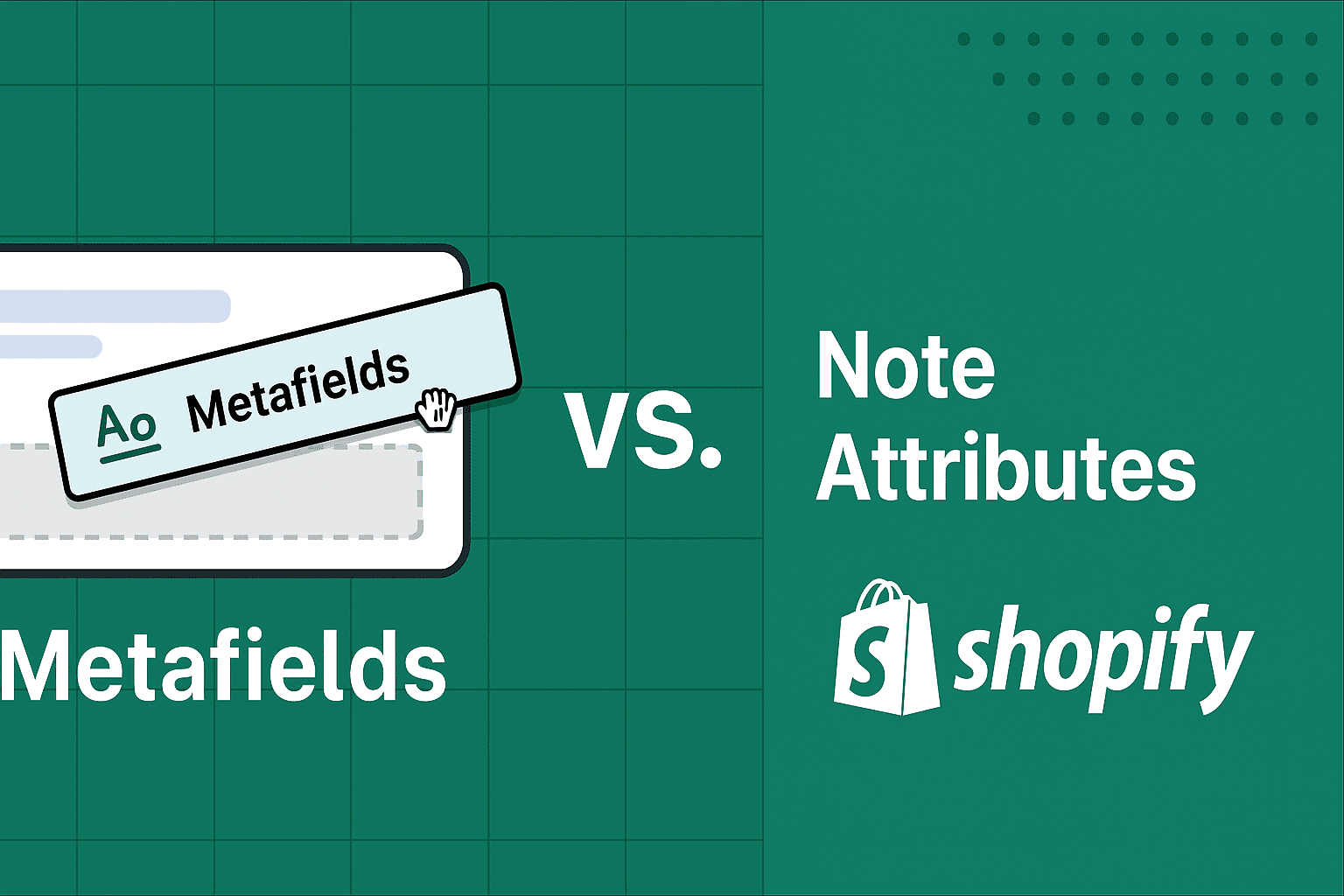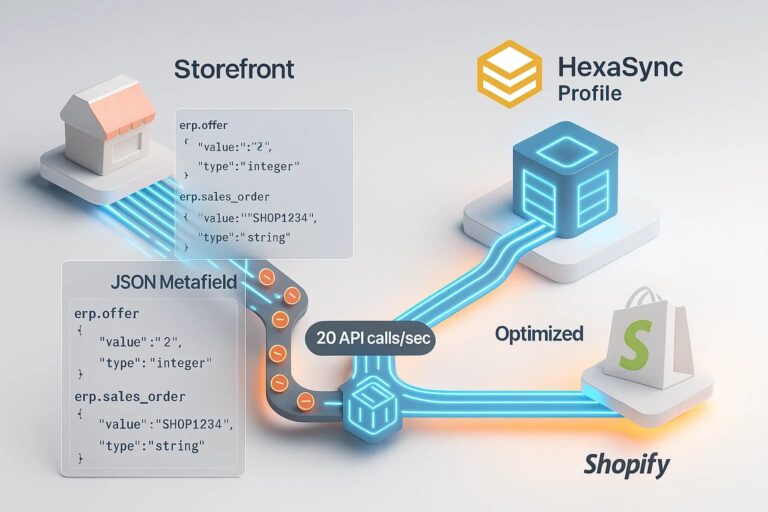Following our earlier exploration of Shopify Note Attributes and their data consistency risks, this article takes a closer look at Shopify Metafields—a more secure alternative, yet not without its own limitations, especially in high-throughput data environments.
1. Overview: Shopify Metafields vs. Note Attributes
While Note Attributes allow developers to update multiple fields in a single API call, they carry serious risks of data overwrite when multiple systems interact.
In contrast, Shopify Metafields provide structured, isolated fields that significantly reduce conflict. However, they must be updated individually, requiring one API call per metafield. This presents performance and scalability challenges in real-time integration scenarios.

2. The API Bottleneck Problem
Shopify enforces a rate limit of 20 API requests per second per app, which is shared across all operations—product syncs, inventory updates, order creation, metafield updates, and more.
Typical API Consumers in a Shopify Integration Solution:
- Syncing product data from ERP (e.g., 3rd System) to Shopify
- Updating inventory levels from ERP to Shopify
- Pulling product and inventory info from Shopify for mapping to marketplaces
- Fetching warehouse mapping and stock ratios for sync with 3rd System or marketplaces
- Creating and updating orders from marketplaces to Shopify
- Order Fulfillment App retrieving 150–200 orders/hub from Shopify
- Updating order fulfillment status, routing, or return handling via metafields
What Happens in Practice:
Let’s say one order contains 10 metafields:
- Each metafield requires 1 API call → 10 API calls for 1 order
- If 2 orders are processed in the same second → 20 calls
- But if other sync tasks also run concurrently → Shopify’s API limit is exceeded
→ Result: Some updates fail silently or get throttled, leading to incomplete or delayed synchronization.
3. Optimization Strategy: Grouping Fields in JSON Metafields
To avoid hitting Shopify’s API limit, integration architects can group related data points into a single JSON metafield.
Example Use Case from HexaSync:
A 3rd System (ERP) syncs the following fields to Shopify:
- Offer ID
- Approved Price
- Unit Price
- Sales Order Status
- Sales Order ID
- Invoice Date
- Invoice Posted Status
- Return Order Date
- Return Order ID
Suggested Grouping:
- erp.offer: Offer ID, Approved Price, Unit Price
- erp.sales_order: Sales Order ID, Status
- erp.invoice: Invoice Date, Posted
- erp.return_order: Return Date, Return ID
Each group is stored as a single JSON metafield, significantly reducing the number of API calls required per order.
4. Practical Example
Instead of making 10 API calls, you only need 4:
{
"offer_id": "OFR-AX-001",
"approved_price": 125.50,
"unit_price": 115.00
}This data is written to metafield erp.offer and updated with one API call.
5. How HexaSync Handles This Challenge
HexaSync is an advanced automation engine that supports a wide range of integrations, including but not limited to Shopify. Designed to help businesses streamline data flows across multiple platforms—ERP, marketplaces, POS, fulfillment systems, and more – HexaSync includes a specialized Shopify integration that addresses the specific challenges outlined in this article:
- Automatically groups and formats metafields in JSON
- Handles retries and throttling when API limits are near
- Optimizes data sync logic to avoid unnecessary updates
- Provides transparency to merchants by displaying metafields in the Shopify order view (similar to how Note Attributes were previously used)
Result:
Merchants get full visibility into external data—without worrying about API constraints or update conflicts.
6. Best Practices for Implementing Shopify Metafields at Scale
To maximize the performance and maintainability of Shopify integrations using Metafields, here are key best practices:
6.1 Use Logical Namespacing
Structure metafields by functional domains. For example:
erp.sales_orderfulfillment.statusreturns.processing
This avoids collision between systems and improves query clarity.
6.2 Store Multiple Data Points in JSON Format
Instead of scattering data across separate Shopify metafields, use JSON objects when fields are related and updated together. This reduces API calls and ensures atomic updates.
6.3 Minimize Redundant Updates
Use change detection logic to sync only when values differ. Avoid blind updates to reduce unnecessary API usage.
6.4 Queue and Rate Control
Use job queues and retry mechanisms to handle bursts of data, gracefully recover from throttling, and maintain order across sync tasks.
6.5 Build a Layered Sync Architecture
- Layer 1: Data ingestion and transformation
- Layer 2: Sync rules and mappings
- Layer 3: API scheduler and retry logic This approach separates concerns and helps scale sync operations predictably.
7. Final Thoughts
Shopify Metafields are clearly a more reliable and structured way to manage external order data—but their per-field API call requirement can create bottlenecks in high-volume operations.
By consolidating data into grouped JSON fields, designing a robust integration architecture, and using smart platforms like HexaSync, Shopify merchants and developers can overcome API limits, improve stability, and scale their automation workflows with confidence.
🔧 Want to eliminate metafield sync issues? Explore HexaSync Profiles for Shopify
